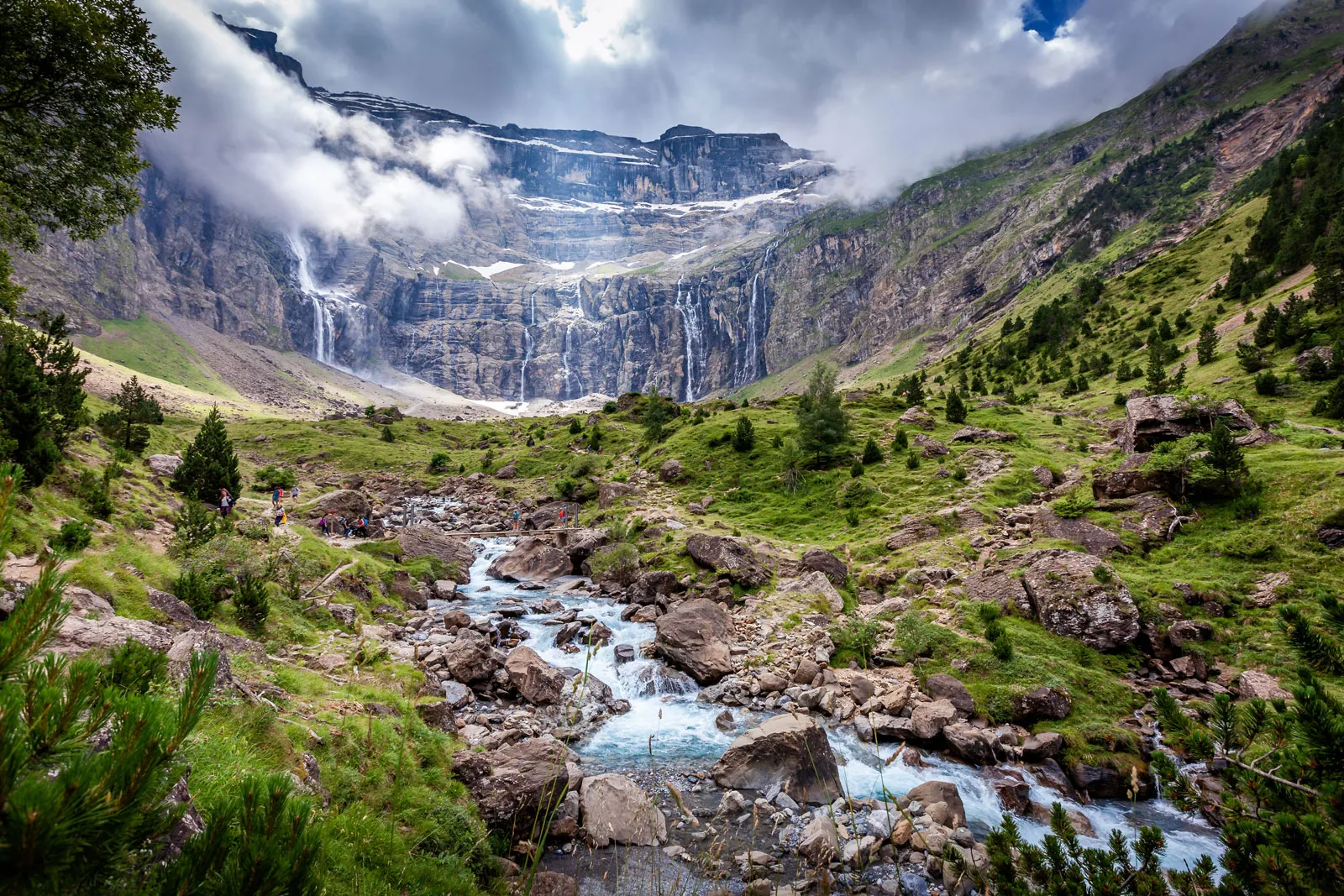Cirques are stunning natural amphitheaters carved into mountains by glacial erosion. These bowl-shaped depressions are often surrounded by steep, near-vertical walls and house small glaciers or tarns (mountain lakes).
Cirques are not only visually striking but also provide valuable insight into the Earth’s glacial history. In this article, we will explore the top 12 largest cirques in the world, spanning various continents and showcasing the awe-inspiring power of nature.
Cirque of the Towers, Wyoming, USA

Located in the Wind River Range of Wyoming, the Cirque of the Towers is a breathtaking sight. This cirque is home to numerous granite spires that soar up to 1,000 feet (300 meters) above the cirque floor. The cirque is approximately 2 miles (3.2 kilometers) wide and is a popular destination for rock climbers and hikers alike. The rugged beauty of the Cirque of the Towers attracts outdoor enthusiasts from around the world.
The formation of the Cirque of the Towers began during the Pleistocene epoch, when glaciers carved out the distinctive shape of the cirque. The granite spires, known as the “Towers,” are the remnants of ancient granite domes that have been eroded over millions of years. The cirque is home to several alpine lakes, including Lonesome Lake, which reflects the towering granite spires on its pristine surface.
Cirque de Gavarnie, France

Situated in the Pyrenees Mountains of southern France, the Cirque de Gavarnie is a UNESCO World Heritage Site and one of the most impressive cirques in Europe. The cirque is approximately 1.8 miles (3 kilometers) wide and features a series of waterfalls, the tallest of which is the Grande Cascade, plunging 1,385 feet (422 meters) from the top of the cirque wall.
The Cirque de Gavarnie has a rich history, with evidence of human habitation dating back to the Neolithic period. The cirque has inspired countless artists, writers, and poets, including Victor Hugo and Gustave Doré. Today, the Cirque de Gavarnie is a popular destination for hikers and nature enthusiasts, who come to marvel at its sheer size and beauty.
Cirque du Fer-à-Cheval, France

Another stunning cirque in the French Alps is the Cirque du Fer-à-Cheval, which translates to “Horseshoe Cirque.” This cirque is located in the Giffre Valley and is approximately 2.5 miles (4 kilometers) wide. The cirque is characterized by its horseshoe shape and the numerous waterfalls that cascade down its steep walls.
The Cirque du Fer-à-Cheval is a hiker’s paradise, with trails leading to the base of the waterfalls and offering breathtaking views of the surrounding mountains. The cirque is also home to a variety of flora and fauna, including alpine flowers, ibex, and chamois.
Cirque de Troumouse, France

The Cirque de Troumouse is another spectacular cirque located in the Pyrenees Mountains of France. This cirque is approximately 2.5 miles (4 kilometers) wide and is surrounded by towering peaks that reach heights of over 10,000 feet (3,000 meters). The cirque floor is home to the Lac des Aires, a stunning alpine lake that reflects the surrounding peaks.
The Cirque de Troumouse is accessible via a scenic drive or hike, and visitors can explore the cirque’s many hiking trails and marvel at its natural beauty. The cirque is also known for its unique geological features, including the Brèche de Roland, a 130-foot (40-meter) wide gap in the cirque wall.
Cirque de Mafate, Réunion Island
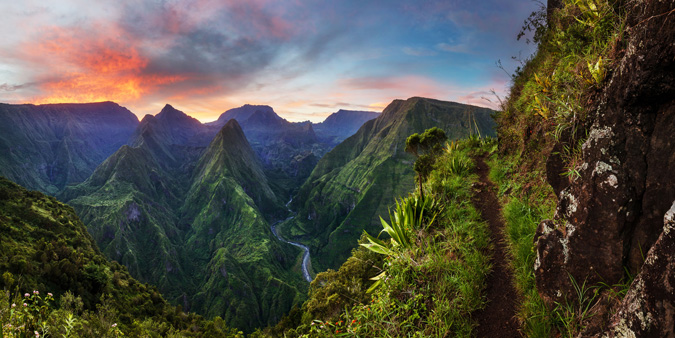
Located on the French island of Réunion in the Indian Ocean, the Cirque de Mafate is a remote and rugged cirque that is only accessible by foot or helicopter. The cirque is approximately 4.3 miles (7 kilometers) wide and is surrounded by towering cliffs that reach heights of up to 3,280 feet (1,000 meters).
The Cirque de Mafate is home to several small villages, inhabited by descendants of enslaved people who escaped to the cirque in the 18th and 19th centuries. These villages are self-sufficient, relying on subsistence farming and tourism for their livelihoods. Visitors to the Cirque de Mafate can hike through the rugged terrain, explore the villages, and marvel at the stunning scenery.
Cirque de Salazie, Réunion Island
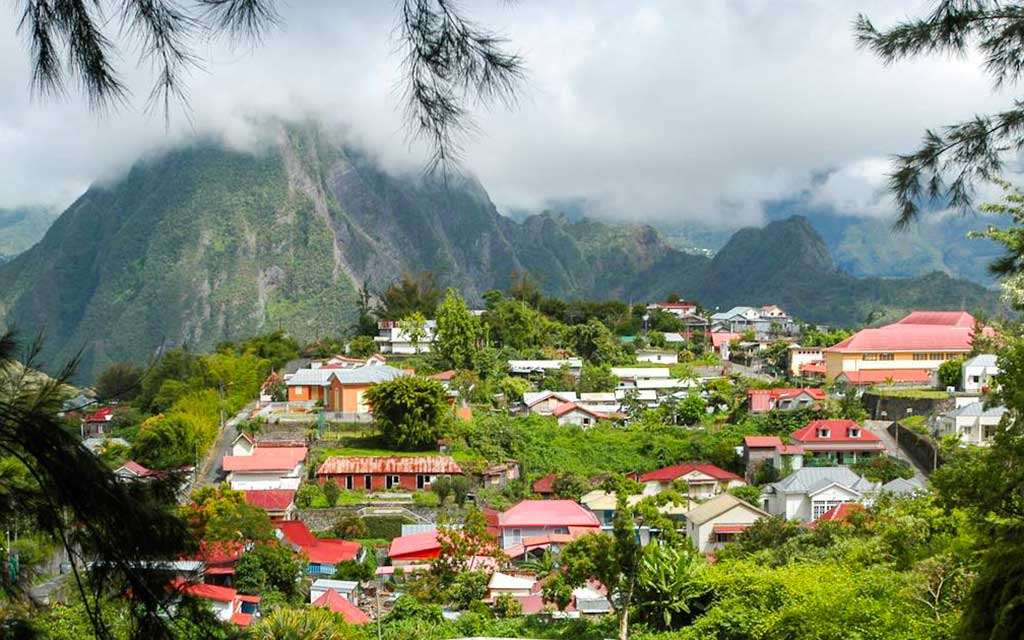
Also located on Réunion Island, the Cirque de Salazie is another impressive cirque that is approximately 3.7 miles (6 kilometers) wide. The cirque is known for its lush vegetation, numerous waterfalls, and the charming village of Hell-Bourg, which has been voted one of the most beautiful villages in France.
The Cirque de Salazie is a popular destination for hikers and nature enthusiasts, who come to explore its many trails and marvel at its natural beauty. The cirque is also home to several endemic plant and animal species, making it a unique and biodiverse environment.
Cirque de Cilaos, Réunion Island

The third and smallest of the cirques on Réunion Island is the Cirque de Cilaos, which is approximately 2.5 miles (4 kilometers) wide. Despite its smaller size, the Cirque de Cilaos is no less impressive than its larger counterparts, with towering cliffs, waterfalls, and a picturesque village at its center.
The village of Cilaos is known for its thermal baths, Creole cuisine, and locally produced wine. Visitors to the Cirque de Cilaos can hike its many trails, relax in the thermal baths, and sample the local cuisine and wine.
Cirque of the Unclimbables, Canada

Located in the remote wilderness of the Nahanni National Park Reserve in Canada’s Northwest Territories, the Cirque of the Unclimbables is a challenging and awe-inspiring destination for experienced rock climbers. The cirque is home to several towering granite spires, including the 2,500-foot (760-meter) Lotus Flower Tower.
The Cirque of the Unclimbables is only accessible by float plane, and visitors must be well-prepared for the rugged and remote wilderness. The cirque offers some of the most challenging and rewarding rock climbing in the world, attracting elite climbers from around the globe.
Cirque de Salanfe, Switzerland
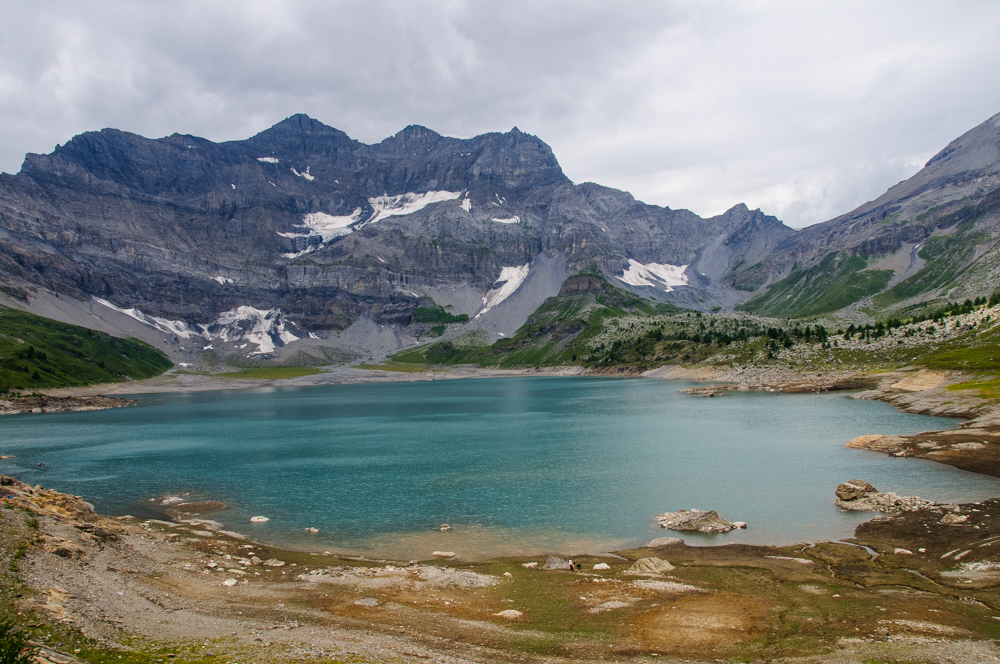
Located in the Swiss Alps, the Cirque de Salanfe is a stunning cirque that is approximately 1.2 miles (2 kilometers) wide. The cirque is home to the Lac de Salanfe, a turquoise alpine lake that is fed by the surrounding glaciers and waterfalls.
The Cirque de Salanfe is a popular destination for hikers and nature enthusiasts, who come to marvel at its natural beauty and explore its many trails. The cirque is also known for its unique geological features, including the Dents du Midi, a series of seven peaks that tower over the cirque.
Cirque de Sixt-Fer-à-Cheval, France

Another stunning cirque in the French Alps is the Cirque de Sixt-Fer-à-Cheval, which is approximately 3.1 miles (5 kilometers) wide. The cirque is characterized by its steep walls, numerous waterfalls, and the picturesque village of Sixt-Fer-à-Cheval at its base.
The Cirque de Sixt-Fer-à-Cheval is a hiker’s paradise, with trails leading to the base of the waterfalls and offering breathtaking views of the surrounding mountains. The cirque is also known for its unique geological features, including the Tête de la Sallaz, a rock formation that resembles a human head.
Cirque de Navacelles, France

Located in the Cévennes Mountains of southern France, the Cirque de Navacelles is a unique and striking cirque that is approximately 1.2 miles (2 kilometers) wide. The cirque is characterized by its distinctive meander, formed by the Vis River, which has carved a deep gorge into the cirque floor.
The Cirque de Navacelles is a UNESCO World Heritage Site and is known for its unique geological features and stunning scenery. Visitors can hike to the top of the cirque walls for breathtaking views of the meander and the surrounding mountains, or explore the charming villages that dot the cirque floor.
Cirque de Gauli, Switzerland
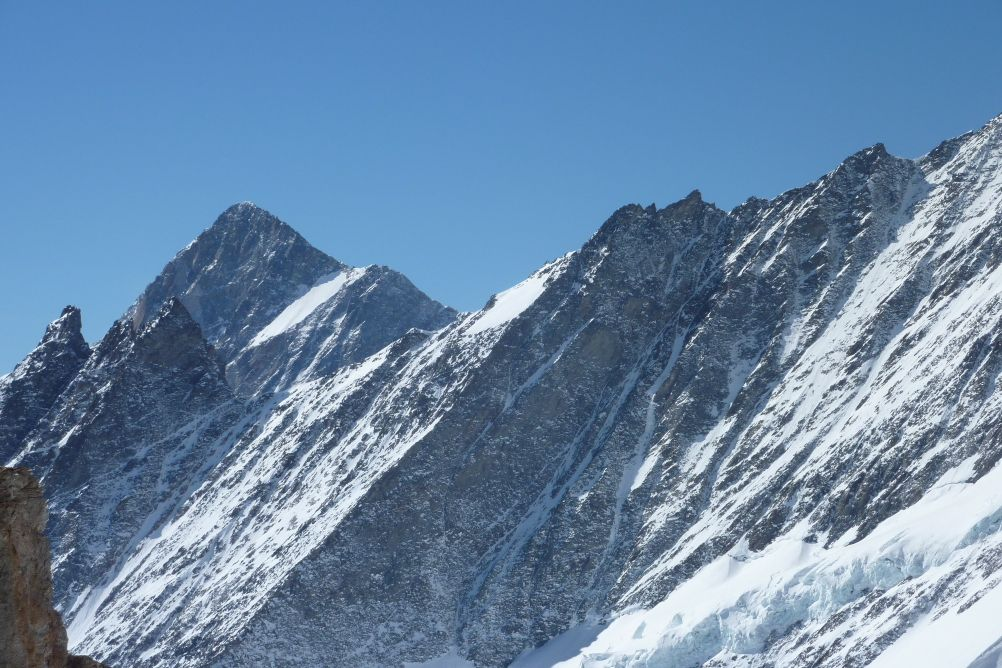
Located in the Bernese Alps of Switzerland, the Cirque de Gauli is a stunning cirque that is approximately 1.9 miles (3 kilometers) wide. The cirque is surrounded by towering peaks, including the Ewigschneehorn, which reaches a height of 11,812 feet (3,600 meters).
The Cirque de Gauli is a popular destination for hikers and mountaineers, who come to explore its rugged terrain and marvel at its natural beauty. The cirque is also home to the Gauli Glacier, which is one of the largest glaciers in the Bernese Alps.
Conclusion
The top 12 largest cirques in the world showcase the incredible power and beauty of nature. From the towering granite spires of the Cirque of the Towers in Wyoming to the lush vegetation and charming villages of the cirques on Réunion Island, each cirque offers a unique and awe-inspiring experience.
These natural amphitheaters are a testament to the Earth’s glacial history and continue to captivate visitors from around the world with their rugged beauty and stunning scenery. Whether you are a hiker, rock climber, or simply a lover of nature, exploring these magnificent cirques is an unforgettable adventure that will leave you in awe of the natural world.

